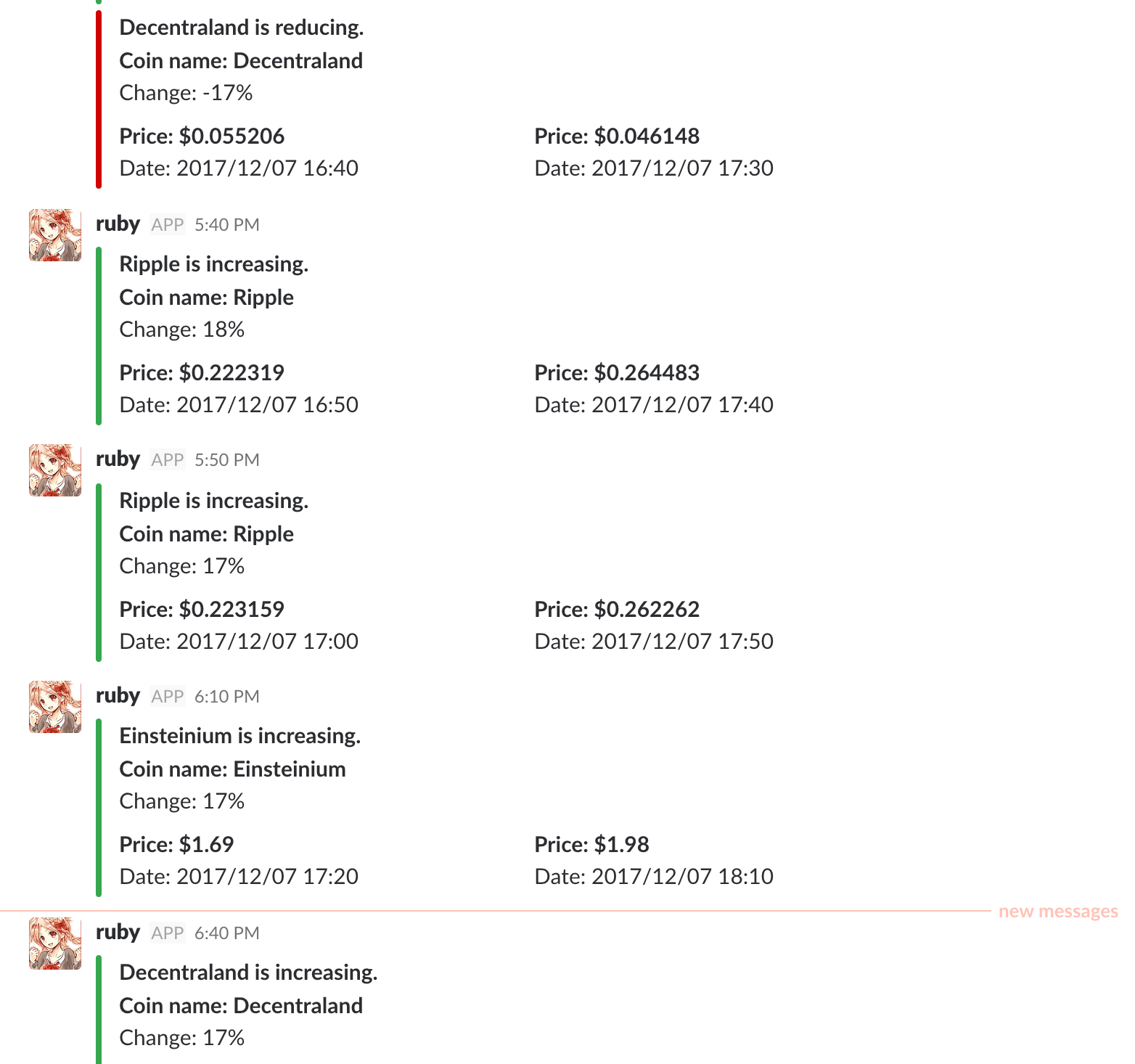
What is Blockchain? Bitcoin? I couldn’t understand it lately but there was a cool repository which is naivechain(https://github.com/lhartikk/naivechain), so now I’d love to code and understand it! This repo represents what basic knowledge of Blockchain is with a small amount of codes in Javascript. It’s not fun to just copy the code so I’m going to code this in Ruby here. It seems a lot of people are doing the same thing, so I’m not going to be shy and just do it for me!
ELEMENTS
- Node –> Cutting board; everything happens on here
- Mining –> Knife; Cut, cut, cut, cut, and cut
- P2P –> Cooking chopsticks; This lets you move ingredients to a cutting board from other cutting boards
- Block –> Ingredient; sausage
- Blockchain –> Sausages; Sausages connect
- Hash –> Spice; Secret spice
As you can see, it’s not complex; there’s only a few elements here.
1, PREPARATION
Let’s put the cutting board first. Let’s assume there are multiple cutting boards so that we need to communicate port between them to be able to share the sausages smoothly. It is used by TCPSocket also known as cooking chopsticks to build it. I couldn’t understand the relation between TCPSocket and TCPServer at first, but TCPServer waits for TCPSocket. It waits, waits and waits for coming TCPSocket and if TCPSocket comes at last, then TCPServer waits for another TCPSocket. This is grabbing sausages.
class Node
def initialize(port, other_node_ports = [])
@clients = []
other_node_ports.each do |other_node_port|
client = TCPSocket.open('localhost', other_node_port)
Thread.start do
listen_message(client)
end
@clients << client
end
@server = TCPServer.open('localhost', port)
init_connection
end
end
initialize is gonna be like this. It tries to connect to the existing TCPSocket and prepare to wait for other TCPSocket.
2, HANDLING A KNIFE
Everything is on the stage - the cutting board - so then let’s cut the ingredients! This logic shows you one of the important keywords of Blockchain which is mining. We do mining to make the secret spice, and the secret spice is used to make sausage. The more time you take to make the secret spice, the more tasty your sausages will be. That’s a fact, isn’t it? In my understanding, taking much time guarantees the correctness of Blockchain. But I cannot take much time here so I’m gonna use chemical seasoning. It’s called Ajinomoto.
def mine_with_loop
Thread.start do
loop { mine; sleep(Random.rand(10)) }
end
end
def mine
@blockchain << generate_next_block(@blockchain.last)
broadcast
end
This code does mining endlessly. Simplified, it cuts every 0 to 10 seconds. One cut makes one sausage.
def generate_next_block(block_data)
previous_block = @blockchain.last
next_index = previous_block["index"] + 1
next_timestamp = Time.now.to_i
next_data = "Smart contract" + next_index.to_s
next_hash = calculate_hash(
next_index,
previous_block["hash"],
next_timestamp,
next_data
)
{
"index" => next_index,
"previous_hash" => previous_block["hash"],
"timestamp" => next_timestamp,
"data" => next_data,
"hash" => next_hash
}
end
block includes
index–> which index of blockprevious_hash–> previous hash keytimestamp–> created atdata–> datahash–> proof key
3, FINISH
Finally, you’re going to toss your sausages to people to show them how good your sausages are! You use cooking chopsticks for this part. People who receive your sausages evaluate how your sausages’ tastiness. If they’re delicious and the length of sausages is longer than the person’s own, then the person is going to keep yours but if it’s not, he is gonna throw it away. And then the person will start to cut again.
def verify(blockchain)
replace_chain(blockchain) if is_valid_chain(blockchain)
end
def is_valid_chain(blockchain)
if blockchain[0] != get_genesis_block
return false
end
temp_blocks = [blockchain[0]]
blockchain[1..-1].each_with_index do |block, index|
if is_valid_new_block(block, temp_blocks[index])
temp_blocks << block
else
return false
end
end
true
end
def is_valid_new_block(new_block, previous_block)
if previous_block["index"] + 1 != new_block["index"]
return false
elsif previous_block["hash"] != new_block["previous_hash"]
return false
elsif calculate_hash_for_block(new_block) != new_block["hash"]
return false
end
true
end
4, HOW TO MAKE THE SECRET SPICE
This comes from a secret formula so that it inherits old sausages and adds a new generation. Here we use base64digest to calculate the string. It’s supposed to be an unchanging calculation in order to confirm correctness every time. How to generate hash for real is more difficult than this. I’ll study it another time - here we use simple way:
def calculate_hash_for_block(block)
calculate_hash(block["index"], block["previous_hash"], block["timestamp"], block["data"])
end
def calculate_hash(index, previous_hash, timestamp, data)
Digest::SHA256.base64digest(index.to_s + previous_hash.to_s + timestamp.to_s + data.to_s).to_s
end
END
As we repeat these process Blockchain is getting bigger and bigger. As a starting point here, I’m going to understand:
- the algorithm of generating hash
- how data exists and how the data exists differently between altcoins (I believe this is why there are many types of altcoins)
etc….. I still have a ton of questions for Blockchain, so I’d love to figure them out one by one.
Here is the source code https://github.com/ikuto0608/naivechain